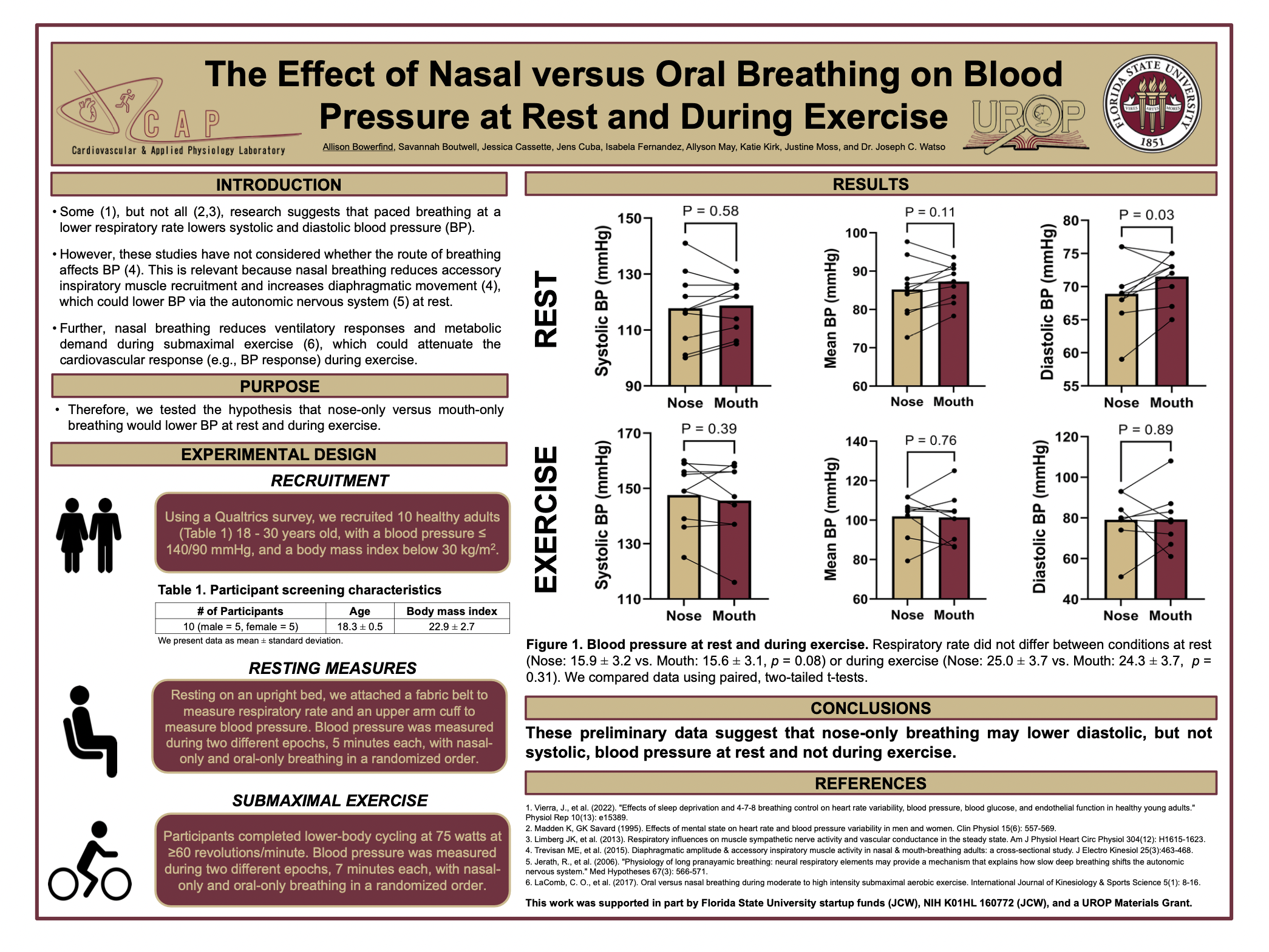Research Symposium
23rd annual Undergraduate Research Symposium, April 6, 2023
Allison Bowerfind Poster Session 1: 11:00 am - 12:00 pm/ Poster #43

BIO
My name is Allison Bowerfind and I am a sophomore from Spring Hill, FL. I am a dual-degree, pre-med student with majors in behavioral neuroscience and sociology and a minor in chemistry. After obtaining my bachelor's degree, I would like to attend medical school to become a psychiatrist or cardiologist. At Florida State, I am currently a mentor for students who have their high school AA degrees and a member of the sorority, Pi Beta Phi. In my free time, I love to spend time outside, doing things like walking my dog, running, or spending time with family and friends.
The Effect of Nasal versus Oral Breathing on Blood Pressure at Rest and During Exercise
Authors: Allison Bowerfind, Joseph C. WatsoStudent Major: Behavioral Neuroscience and Sociology
Mentor: Joseph C. Watso
Mentor's Department: Department of Nutrition and Integrative Physiology Mentor's College: College of Health and Human Sciences Co-Presenters:
Abstract
Breathing patterns affect cardiovascular variables, like blood pressure, at rest and during exercise. Because the effects of nasal breathing have not been studied on blood pressure, we tested the hypothesis that nose-only versus mouth-only breathing would lower blood pressure at rest and during exercise. Blood pressure was measured in the laboratory during rest and submaximal exercise in 10 healthy participants (females=5, males=5; age=18±1 years; body mass index=23±3 kg/m2). The order of breathing (nasal vs. oral) was randomized, with the respiratory rate fixed between conditions. The resting period consisted of two 5-minute epochs. The submaximal exercise (cycling @ 75 watts) consisted of two 7-minute epochs. We compared variables using two-tailed, paired t-tests for rest and exercise. By design, breathing rate did not differ between nose-only (15.9±3.5 breaths/minute) and mouth-only breathing (15.9±3.5 breaths/minute, p=0.0.1) at rest nor between nose-only (24.7±4.1 breaths/minute) and mouth-only breathing (24.7±4.1 breaths/minute, p=0.3) during exercise. Our data suggest that diastolic blood pressure for nose-only breathing (69±5 mmHg) was also lower than for mouth-only breathing (72±3; p=0.03) at rest. However, systolic blood pressure for nose-only breathing (118±13 mmHg) was not different from mouth-only breathing (119±9 mmHg; p=0.58) at rest. Systolic blood pressure for nose-only breathing (147±12 mmHg) was not different from mouth-only breathing (146±14 mmHg; p=0.72) during exercise. Similarly, diastolic blood pressure for nose-only breathing (80±12 mmHg) was not different from mouth-only breathing (79±13 mmHg; p=0.32) during exercise. These preliminary data suggest that nose-only breathing may lower diastolic, but not systolic, blood pressure at rest and not during exercise.
Keywords: Exercise, Blood Pressure, Health


